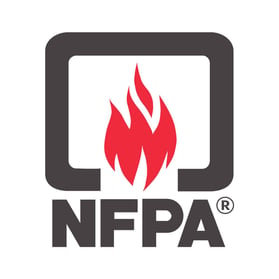
National Fire Protection Association Standard 110 (NFPA 110) is written specifically for emergency and standby power systems and covers installation, maintenance, operation and testing requirements as they pertain to the performance of the emergency power supply system (EPSS). It includes standards related to generators, transfer switches, fuel systems, circuit breakers and other components of the EPSS. The first three chapters of the Standard provide an introduction. Chapters four through eight each address one essential element for compliance.
Chapter 4: Classification of EPSSs. Once the system is identified as either critical to life safety (Level 1) or less critical (Level 2), the tables in Chapter 4 of NFPA 110 identify the minimum runtime (class) and power restoration time (type) for the system. These three categories – Class, Type and Level – are used to classify an EPSS and need to be specified in any project specification to ensure that the proper system configuration is quoted and supplied.
Chapter 5: Emergency Power Supply - Energy Sources, Converters and Accessories. Although there are several permissible sources for standby power systems, generator sets are the most common for code-required systems beyond egress lighting. Chapter 5 of NFPA 110 covers the Emergency Power Supply that generates the electrical power in emergency and standby power systems. There are a few definitions that are important to understanding NFPA 110, including:
- Emergency Power Supply (EPS) – The source of electric power. Typically, this is the generator set and fuel supply system. In paralleled systems, the EPS includes the generator sets and the paralleling switchgear.
- Emergency Power Supply System (EPSS) – The backup power system in its entirety – from the fuel tank up to the load terminals of the transfer switch. It includes the EPS, circuit breakers, conductor cables, controls and monitoring devices, and transfer switches.
Chapter 6: Transfer Switch Equipment. Chapter 6 of NFPA 110 defines the performance requirements for transfer switches. Transfer switches are responsible for transitioning electrical power from the primary power source to a secondary source in the event of a primary source interruption, maintenance or failure. Automatic transfer switches (ATSs) are the most common style of transfer switches used in EPSSs and automatically transfer the load to the EPS (e.g., generator) when the normal source of power (e.g., utility) is lost – and back again, once the power has returned.
Chapter 7: Installation and Environmental Considerations. While NFPA 110 is not a design standard or installation guide for EPSS, Chapter 7 of NFPA 110 defines the minimum installation requirements that are recognized as essential for the successful operation of the EPSS. While NFPA 110 identifies “best practices” to prevent the disruption of critical loads in the event of an emergency and outlines the tests required to prove compliance, it is the Authorities Having Jurisdiction (AHJ) who are responsible for “approving equipment, materials, an installation or a procedure.” Therefore, it is important to involve the AHJ early in the design process to ensure that you are meeting their requirements.
Chapter 8: Routine Maintenance and Operational Testing. After the equipment is installed and has passed the acceptance testing requirements, the AHJ will approve the installed system for use as an emergency power system. However, NFPA 110 compliance does not stop there. Regular verification that the installed system is functional is necessary to ensure that standby power will be available when called upon in the event of a power outage. Chapter 8 of NFPA 110 contains requirements for routine maintenance and operational testing of EPSSs. The required maintenance items will depend on the equipment manufacturer’s recommendations and the AHJ requirements, but NFPA 110 does include alternative recommendations if no manufacturer guidelines are available.
At a minimum, NFPA 110 requires a weekly inspection and a monthly load test be performed on the EPSS. Depending on the unique circumstances at each particular facility, such as meeting the minimum load requirements of the monthly tests or operating the transfer switches, additional testing may be required, including an annual load bank test and a transfer switch maintenance program. Level 1 EPSSs must also be load tested at least once within every 36 months for four hours or for the duration of their Class. Maintenance records and test results must also be kept and made available to the AHJ upon request.
If you are required to comply with NFPA 110 or just looking for best practices to ensure the reliability of your generator and standby power system, visiting the NFPA 110 pages on our website is a good place to start. Ultimately, you may need to contact your local AHJ to determine which codes apply to your application. Our in-house application engineers and qualified technicians can help answer any questions you might have about designing, installing, operating, maintaining or testing emergency and standby power systems. Please contact us for assistance.
.png?width=159&height=72&name=Curtis%20Power%20Solutions%20(RGB).png)






